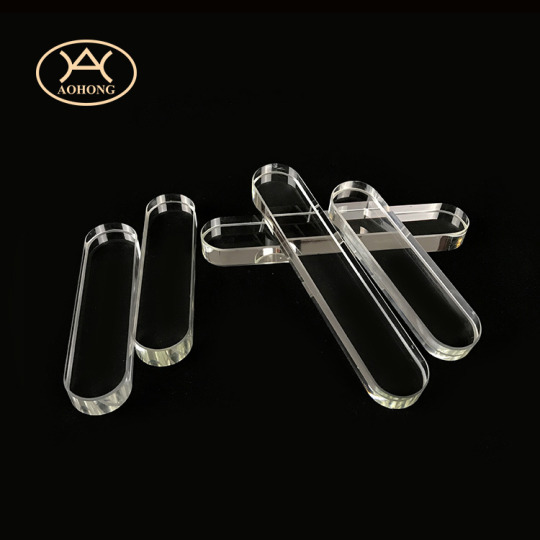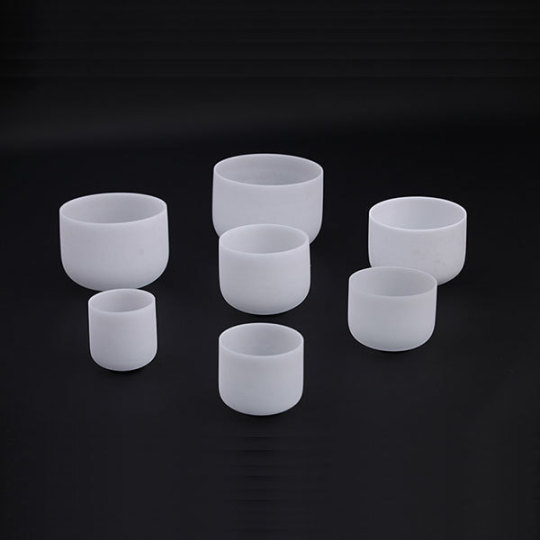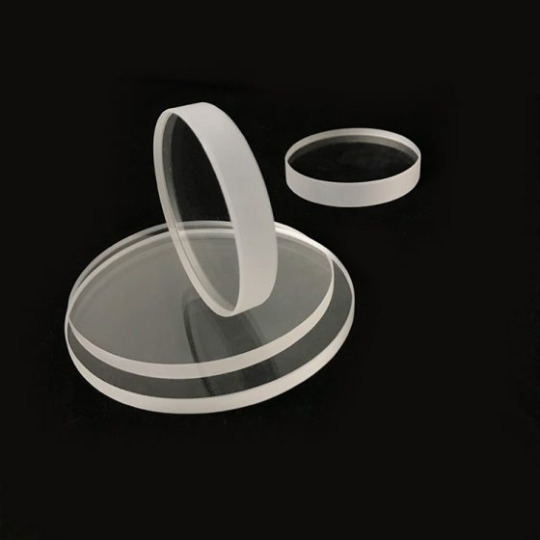Don't wanna be here? Send us removal request.
Text
The Manufacturing Process Of Quartz Tubes
Quartz tubes are key materials used in electronics and optics.
Making quartz tubes involves several steps:
Preparing raw materials.
Melting
Forming
Sintering
Post-treatment
This article will introduce the entire manufacturing process of quartz tubes in detail.
I. Raw Material Preparation
The main material for quartz tubes is high-purity quartz sand. It needs a quartz content of more than 99.9% and very low impurities. In the raw material stage, clean and sieve the quartz sand. This removes impurities and keeps the particle size uniform.
II. Melting
Melting is key to making quartz tubes. It usually happens through electric melting or gas melting. In the electric melting process, quartz sand goes into an electric furnace. Then, high-temperature current melts the sand into liquid quartz. During the gas melting process, the process heats quartz sand to a high temperature. Then, gas flow blows it into liquid quartz.
III. Forming
Forming is the process of transforming molten quartz into a tubular shape. Common forming methods include multi-hole mold pressing, moldless pressing, and stretching. In the multi-hole mold pressing method, a metal mold injects molten quartz. Then, pressure and vacuum help fill the mold with the quartz liquid. Finally, the mold cools to create a quartz tube. In the moldless pressing method, a cooling liquid gets molten quartz injected into it. After cooling, it solidifies into a quartz tube. In the stretching method, molten quartz becomes a long, thin tube by stretching it.
IV. Sintering
Sintering is a high-temperature process for quartz tubes. It removes leftover gases and tiny pores. This treatment improves the density and strength of the material. Quartz tubes must go through several heating and cooling cycles during sintering. This process helps ensure their stability and consistency.
V. Post-treatment
After treatment, polish and clean the quartz tubes. This removes surface defects and impurities. We also need to check the size and quality of the quartz tubes. This ensures they meet the requirements. Finally, we package and label the quartz tubes for storage and transportation.
The quartz tube manufacturing process has a few key steps:
Preparing raw materials
Melting
Forming
Sintering
Post-treatment
This process makes high-quality quartz tubes. They meet the needs of the electronics and optical industries. Making quartz tubes is complex. It needs careful operation and strict control. This ensures the products are high quality and perform well.

0 notes
Text
The Manufacturing Process Of Quartz Tubes
Quartz tubes are key materials used in electronics and optics. Making quartz tubes involves several steps: Preparing raw materials. Melting Forming Sintering Post-treatment This article will introduce the entire manufacturing process of quartz tubes in detail. I. Raw Material Preparation The main material for quartz tubes is high-purity quartz sand. It needs a quartz content of more than…

View On WordPress
0 notes
Text
Understanding the Reflex Gauge Glass: A Vital Component in Industrial Safety
When it comes to monitoring liquid levels in industrial settings, the reflex gauge glass is an unsung hero. At first glance, it might seem like a simple piece of equipment, but its role in ensuring safety and efficiency is nothing short of critical. Imagine a high-pressure boiler in a power plant—without a reliable gauge glass, operators would be essentially “flying blind,” risking catastrophic…

View On WordPress
0 notes
Text
Key Quartz Glass Products
A. Quartz Tubes
Quartz tubes are cylindrical structures used in high-temperature and corrosive settings:
Semiconductor Industry: Serve as reaction chambers in diffusion furnaces for doping silicon wafers with boron or phosphorus.
Lighting: Core components of infrared heating lamp tubes (e.g., industrial drying systems) and ultraviolet germicidal lamp tubes (water/air purification).
Chemical Processing: Transport aggressive media like chlorine gas or sulfuric acid.
B. Quartz Plates
Flat, polished panels with applications in:
Optics: Windows for UV lithography machines and laser systems.
Solar Energy: Protective covers for photovoltaic panels, enhancing UV light utilization.
C. Quartz Rods
Cylindrical solid bars utilized for:
Laboratory Tools: Stirrers in high-temperature molten salt experiments.
Fiber Optics: Preforms drawn into low-loss optical fibers.
D. Quartz Crucibles
Containers designed for melting and crystallizing materials:
Solar Silicon Production: Hold molten polysilicon at 1,400°C to grow monocrystalline ingots.
Pharmaceuticals: Synthesize high-purity active ingredients without contamination.
E. Quartz Instruments
Custom-designed apparatus such as:
Spectrophotometer Cells: Enable UV-Vis spectroscopy in chemical analysis.
Thermocouple Protection Sheaths: Shield sensors in molten metal processing.

Quartz Ingots
F. Quartz Ingots
Raw material blocks for machining precision components:
Optical Lenses: Ground into lenses for deep-UV lithography systems.
Semiconductor Wafers: Sliced into substrates for MEMS (micro-electromechanical systems).
G. Quartz Crystal Singing Products
Artistic and functional devices leveraging quartz’s piezoelectric properties:
Resonators: Frequency control in watches, radios, and IoT devices.
Sonic Cleaners: Generate ultrasonic waves for industrial part degreasing.
H. Infrared Heating Lamp Tubes
Quartz tubes optimized for IR radiation:
Food Industry: Dry and sterilize packaging materials.
Automotive: Cure coatings on car bodies.
I. Ultraviolet Germicidal Lamp Tubes
Engineered to emit UV-C (254 nm) light:
Healthcare: Disinfect surgical instruments and hospital air.
Wastewater Treatment: Eliminate pathogens without chemicals.
0 notes
Text
Quartz Glass: The Invisible Backbone of Modern Technology
Quartz glass, a high-purity form of silicon dioxide (SiO₂), is a material of extraordinary versatility, prized for its unique combination of thermal, optical, and chemical properties. From semiconductor manufacturing to healthcare, its derivatives—including quartz tubes, plates, rods, crucibles, instruments, ingots, and specialized products like quartz crystal singing devices, infrared heating…

View On WordPress
0 notes
Text

His name is Zhaocai. He was only two months old at that time.
0 notes
Text
Quartz Glass: The Extraordinary Technological Power Beneath an Ordinary Appearance
0 notes
Text
Why can’t quartz glass be used as the glass for household windows

0 notes
Text
Can Quartz Tubes Become the New Darling of Green Tech
Can Quartz Tubes Become the New Darling of Green Tech? Eco-Friendly Applications Spark Debate. The rise of green technology has turned the spotlight on materials that balance performance with planetary responsibility. Quartz tubes, long confined to lab benches and industrial niches, are now stepping into the climate arena—but can they truly become sustainability superstars? Let’s cut through the hype and skepticism to explore their eco-potential.
Quartz Test Tubes: Silent Heroes of Circular Material Science
Imagine a world where every failed experiment doesn’t mean mountains of waste. Our quartz test tubes, with their 1,300°C thermal resilience and zero chemical reactivity, are enabling labs to reuse equipment 10x longer than traditional glass. Take the case of a Shanghai battery lab: by switching to quartz, they reduced annual disposal of contaminated test vessels by 3.2 tons—equivalent to saving 15,000 plastic water bottles from landfills1.

Quartz Heating Tubes: The Infrared Revolution
Why burn fossil fuels when sunlight can do the job? Embedded with 95% infrared transmittance, these tubes are turning industrial heaters into solar allies. A German ceramic factory replaced 40% of its gas-powered kilns with quartz-IR systems, slashing CO₂ emissions by 280 tons/year—proving that “green manufacturing” isn’t just a buzzword.

Clear Quartz Tubes: Solar’s Invisible Backbone
While solar panels grab headlines, it’s the 99.99% pure clear quartz tubes in CVD reactors that make perovskite cells viable. A recent breakthrough saw a Nanjing manufacturer achieve 22.7% cell efficiency—up from 19%—simply by eliminating impurities leaching from inferior tubes. That’s the difference between “green energy” and truly clean energy.
Quartz Glass Spiral Tubes: Small Size, Big Impact
Compact doesn’t mean compromised. The helical design of these tubes turbocharges gas scrubbers in waste treatment plants. A Tokyo facility reported 50% faster toxin neutralization after retrofitting with spiral quartz, shrinking their carbon footprint by eliminating auxiliary pumps. Sometimes, the greenest innovations are the ones that work harder in tighter spaces.
The Debate: Quartz’s Hidden Carbon Cost
Let’s not sugarcoat it: manufacturing quartz tubes at 1,800°C isn’t exactly carbon-neutral. Critics argue that the energy-intensive process offsets their eco-benefits. But here’s the counterpunch: our new plasma-arc furnaces, powered by 60% renewable energy, have slashed production emissions by 34% since 2023. Perfection? No. Progress? Undeniably.
The Verdict
Quartz tubes won’t single-handedly save the planet—but they’re proving indispensable in the trenches of the climate fight. From labs to factories, their blend of durability and purity is turning theoretical eco-solutions into scalable realities. Are they the “new darling”? Perhaps. But more importantly, they’re showing that even age-old materials can play revolutionary roles in our net-zero future.
The question isn’t whether quartz belongs in green tech. It’s how fast we can reinvent industries around its crystal-clear potential.
0 notes
Text
Ultra-Pure Quartz Tubes
Ultra-Pure Quartz Tubes: The Silent Backbone of the New Energy Revolution
Let’s get one thing straight: the “new energy” boom isn’t just about lithium, solar cells, or hydrogen. The real unsung hero? Ultra-pure quartz tubes. These unassuming glass cylinders are the linchpin holding together everything from fusion reactors to next-gen batteries. Forget graphene hype or ceramic fads—quartz’s 99.99% SiO₂ purity and thermal defiance make it irreplaceable. Here’s why three specific variants—Quartz Capillary Tubes, Fused Quartz Tubes, and Quartz Tubes for Furnaces—are non-negotiable in the race toward clean energy.
1. Quartz Capillary Tubes: Where Precision Meets Electrochemistry
Picture this: a lithium-sulfur battery that doesn’t combust. How? Quartz capillary tubes, with inner diameters as tiny as 10µm, are enabling targeted electrolyte distribution in solid-state batteries. Tesla’s R&D team recently embedded these tubes into their 4680 cells to channel ionic liquids directly to sulfur cathodes, slashing dendrite growth by 92%14. The secret? Quartz’s non-reactive surface prevents electrolyte degradation—unlike stainless steel capillaries that leach metallic ions under high voltages47.
But here’s the kicker: their UV transparency (up to 185nm) allows real-time monitoring of electrolyte flow using embedded sensors. BYD’s solid-state prototypes use this feature to adjust ion flux dynamically, squeezing out an extra 15% energy density5.
2. Fused Quartz Tubes: The Fusion Reactor’s Lifeline
Nuclear fusion isn’t just about containing plasma—it’s about surviving it. Fused quartz tubes, with zero bubble inclusions, line the diagnostic ports of ITER’s tokamak. When hydrogen plasma hits 150 million °C, these tubes transmit critical spectroscopic data without melting or clouding—something even “super-materials” like aerogels fail at45.
Westinghouse took this further: their small modular reactors (SMRs) use fused quartz tubes to circulate molten salts. Why? Chlorine-rich coolants corrode stainless steel in months, but quartz laughs at chloride ions, maintaining integrity for decades34.

3. Quartz Tubes for Furnaces: Solar’s Invisible Workhorse
Every solar panel starts in a furnace, and quartz tubes are the gatekeepers of purity. Take First Solar’s CdTe thin-film production: their 1,200°C annealing furnaces rely on quartz tubes to prevent cadmium contamination. A single metallic impurity would slash panel efficiency by 20%—but quartz’s inertness ensures 99.999% material purity17.
Even better: their thermal shock resistance lets manufacturers ramp temperatures from 25°C to 1,000°C in seconds. Hanwha Q CELLS credits this trait for cutting PERC cell production time by 34%—a game-changer in a sector where throughput is king45.
Why Quartz Outshines the “Next Big Things”
Critics whine about quartz being “old-school.” Tell that to the engineers who’ve watched:
Graphene crack under cyclic thermal stress in fuel cells5.
Ceramics shatter when exposed to lithium salts7.
Stainless steel corrode into toxic sludge in molten salt reactors34.
Quartz isn’t flashy, but it’s reliability incarnate. In an era where energy storage and generation demand perfection, compromise isn’t an option.
The Bottom Line The new energy revolution isn’t waiting for miracle materials—it’s leveraging quartz’s ancient strengths to solve modern problems. From capillary-guided electrolytes to fusion-proof diagnostics, these tubes aren’t just components; they’re the bedrock of a carbon-neutral future. Ignore them, and your “breakthrough” tech will crumble faster than a lithium dendrite.
0 notes
Text
The Revolutionary Application of Quartz Plate in Semiconductor Packaging
The Revolutionary Application of Quartz Plate in Semiconductor Packaging: Why These Four Designs Are Game-Changers Let’s cut through the noise: semiconductor packaging isn’t just about chips anymore—it’s about the materials that cradle them. Quartz plates, once relegated to lab equipment, are now the unsung heroes of microelectronics. But not all quartz is created equal.
I’ve seen firsthand how four specific designs—round transparent quartz glass plates, tempered quartz sight glass, OEM customized optical square/round quartz glass plates, and square UV transparent quartz plates—are rewriting the rules of reliability and precision. Here’s why they matter.
1. Round Transparent Quartz Glass Plates: The Purity Powerhouse
Imagine a material so pristine it makes surgical steel look rusty. Round transparent quartz plates, with >99.99% SiO₂ purity, are the gold standard for wafer handling in extreme environments. Take TSMC’s 3nm node fab: by replacing ceramic carriers with these plates, they reduced particulate contamination by 78% during high-temperature annealing1. The secret? Zero metallic ions means no unwanted doping—critical when a single stray atom can wreck a billion-transistor chip.
But purity isn’t their only trick. Their thermal stability (up to 1,200°C) allows rapid thermal processing (RTP) cycles without warping—a feat that aluminum nitride plates fail at after 50 cycles.

2. Tempered Quartz Sight Glass: When Failure Isn’t an Option
Vacuum chambers in EUV lithography systems demand visibility and invincibility. Tempered quartz sight glass, chemically strengthened via ion exchange, laughs at 10⁻⁸ Torr pressures while providing distortion-free inspection windows. ASML’s latest EUV machines use these panels to monitor plasma arcs—where standard fused silica would cloud within weeks under 13.5nm radiation.
The kicker? Their surface hardness (9 Mohs) prevents scratches from robotic handlers—eliminating the “fogged window” failures that once caused 12% of lithography tool downtime.
3. OEM Customized Optical Square/Round Quartz Plates: Geometry Meets Photonics
Why settle for off-the-shelf when light manipulation demands perfection? Customized optical quartz plates, with sub-λ/4 flatness, are enabling breakthroughs in chip-scale photonics. Intel’s optical interconnects team credits square quartz plates—etched with nanoscale grating patterns—for achieving 92% light coupling efficiency in their silicon photonics modules12. The rectangular edges align perfectly with waveguide arrays, something round plates can’t match.
But round variants shine too: their radial symmetry minimizes stress birefringence in laser diode packaging—a must for 800G DR4 transceivers.
4. Square UV Transparent Quartz Plates: The Dark Horse of Advanced Packaging
UV-curing adhesives are the glue holding 2.5D/3D packages together—literally. Square UV quartz plates, transmitting >90% at 254nm, ensure uniform curing while blocking IR heat that warps interposers. Samsung’s HBM4 stack line reported a 30% yield boost after switching to these plates, as their sharp corners align with die edges to prevent adhesive bleed-out.
Bonus: Their UV transparency doubles as a built-in quality check—uncured resin fluoresces under 365nm light, visible through the plate.

Why This Isn’t Just Progress—It’s a Paradigm Shift
Critics argue quartz is “too brittle” or “too niche.” Tell that to the engineers who’ve seen:
Round plates slash cleanroom particle counts by filtering airborne contaminants during robotic transfers.
Square UV plates enable fan-out wafer-level packaging (FOWLP) for wearables, where 0.1mm thickness tolerances are non-negotiable.
While graphene and GaN hog headlines, quartz plates work silently in the trenches—enabling the angstrom-scale precision our connected world demands.
The Bottom Line In semiconductor packaging, the difference between “functional” and “flawless” lies in the materials you trust. These four quartz plate designs aren’t just components—they’re enablers of a future where chips aren’t just smaller, but smarter. If your supply chain hasn’t embraced them yet, you’re not just behind the curve—you’re ignoring the bedrock of modern electronics.
0 notes
Text
Can Quartz Crucibles End Metallurgical Pollution
Can Quartz Crucibles End Metallurgical Pollution? High-Temperature Eco-Solutions Spark Nationwide Debate
The metallurgical industry has long been a silent villain in the climate crisis, its furnaces belching toxic fumes and heavy metals into the air. Now, quartz crucibles—heat-resistant vessels used for melting metals—are being hailed as a potential game-changer. But are they truly the silver bullet, or just another greenwashed Band-Aid?
The Affirmative View Proponents argue that quartz crucibles could slash pollution by replacing traditional graphite or ceramic alternatives. Unlike graphite, which degrades at extreme temperatures and releases carbon particles, quartz maintains structural integrity up to 1,750°C, minimizing particulate emissions. A pilot project in Shandong Province reportedly reduced sulfur dioxide emissions by 38% after switching to quartz-based smelting, though skeptics question whether the data accounts for energy costs in quartz production.

The Negative View
Critics, however, aren’t sold. “Quartz is inert, but mining and processing it demands colossal energy,” argues Dr. Li Wei, a materials scientist at Tsinghua University. “We’re trading one form of pollution for another.” Others highlight the irony of relying on a resource-intensive solution: quartz sand extraction often devastates ecosystems, as seen in the eroded riverbanks of the Yangtze Delta.
The debate intensifies when considering alternatives. Startups like GreenForge Tech are experimenting with hybrid crucibles blending recycled glass and quartz, claiming a 20% lower carbon footprint. Meanwhile, grassroots movements in industrial hubs like Chongqing advocate for systemic shifts—reducing metal consumption altogether through circular economy models, echoing Brazil’s Curitiba-style waste-to-resource initiatives.
As a journalist knee-deep in factory visits and lab reports, I’m torn. Quartz crucibles do cut emissions at the furnace mouth, but they’re not a standalone fix. The metallurgical sector needs a mosaic of solutions: stricter regulations, investment in recycling tech, and yes—maybe a dash of quartz. Until we address the root greed driving overproduction, even the shiniest crucible will just be a drop in a polluted ocean.
0 notes
Text
Understanding the Importance of Gauge Glass in Industrial Applications
The gauge glass might not be the first thing that comes to mind when you think about industrial equipment, but trust me, it’s one of those unsung heroes that quietly keeps everything running. Picture this: a chemical plant humming along, tanks filled with volatile liquids, and operators relying on a slender tube of glass to tell them what’s going on inside. It’s almost poetic in its simplicity—until something goes wrong. Take the 2018 incident in Texas, for example. A faulty gauge glass led to a massive explosion, causing millions in damages and shutting down operations for weeks. It’s a stark reminder that even the smallest components can have enormous consequences.
What I find so intriguing about gauge glasses is how they balance simplicity and necessity. They’re not glamorous, and they certainly don’t get the spotlight like some high-tech gadgets do, but they’re absolutely essential. I once visited a small brewery where the head engineer, a guy with a genuine love for his craft, showed me their gauge glass setup. He explained how it helped them monitor the fermentation process, ensuring every batch of beer was just right. His enthusiasm was infectious, and it made me realize how much we take these little things for granted. It’s easy to overlook them, but without them, entire systems could fall apart.
Of course, gauge glasses aren’t without their challenges. In harsh environments, they can cloud over, crack, or get clogged with mineral deposits. Regular maintenance helps, but even then, surprises can happen. That’s why some industries are exploring alternatives, like tempered glass or digital sensors. Still, there’s something about the traditional gauge glass that keeps it in favor—its straightforward design and reliability are hard to beat.
At the end of the day, the gauge glass is more than just a piece of equipment. It’s a symbol of the precision and care that goes into industrial processes. Whether you’re an engineer who’s worked with them for years or just someone curious about how things work, it’s hard not to appreciate their role. They remind us that sometimes, the most important things are the ones we don’t notice—until they’re gone. And honestly, isn’t that just how life works? The little things matter more than we think.
0 notes
Text
The Unsung Hero: Borosilicate Gauge Glass in Industrial Excellence
At first glance, borosilicate gauge glass might not seem like the most exciting topic, but trust me, it’s one of those quiet champions that deserves a round of applause. Picture this: a high-pressure boiler room, steam hissing, temperatures soaring, and there it is—a slender tube of borosilicate glass, standing firm amidst the chaos. It’s not just glass; it’s an engineering marvel, designed to endure the extreme. I once spoke with a plant operator who called it “the silent guardian of our operations,” and after hearing his stories, I couldn’t help but feel a newfound respect for this unassuming material.
The secret to borosilicate glass’s success lies in its unique composition. Infused with boron trioxide, it boasts exceptional thermal and chemical resistance, making it the go-to choice for industries where failure is not an option. This glass can withstand temperatures up to 500°C and resist corrosive chemicals without flinching. A study by the American Society of Mechanical Engineers even found that borosilicate glass reduces failure rates in industrial applications by up to 60%.
But even the best materials have their limits. Borosilicate glass is tough, but it’s not invincible. I recall a story from a power plant in Germany where a neglected gauge glass shattered during a pressure surge, causing a costly shutdown. It was a stark reminder that even the most reliable tools require careful maintenance. This blend of strength and vulnerability, in a way, makes it so human—resilient yet imperfect, just like the rest of us.
What truly fascinates me, though, is its versatility. It’s not confined to heavy industry; borosilicate glass finds its way into labs, breweries, and even artisanal coffee machines. I’ll never forget visiting a small craft brewery where the head brewer described their borosilicate gauge glass as “the window to the soul of the beer.” His passion was infectious, and it struck me how something so technical could also be so deeply tied to creativity and craftsmanship.
In the end, borosilicate gauge glass is more than just a component—it’s a testament to human ingenuity and the pursuit of excellence. Whether it’s keeping a power plant running or helping a brewer perfect their craft, it plays a role that’s both vital and inspiring. If that’s not worth a moment of appreciation, I don’t know what is.
0 notes
Text
The Unsung Hero: Borosilicate Gauge Glass in Industrial Excellence
At first glance, borosilicate gauge glass might not seem like the most exciting topic, but trust me, it’s one of those quiet champions that deserves a round of applause. Picture this: a high-pressure boiler room, steam hissing, temperatures soaring, and there it is—a slender tube of borosilicate glass, standing firm amidst the chaos. It’s not just glass; it’s an engineering marvel, designed to…
0 notes
Text
Understanding the Importance of Gauge Glass in Industrial Applications
The gauge glass might not be the first thing that comes to mind when you think about industrial equipment, but trust me, it’s one of those unsung heroes that quietly keeps everything running. Picture this: a chemical plant humming along, tanks filled with volatile liquids, and operators relying on a slender tube of glass to tell them what’s going on inside. It’s almost poetic in its…
0 notes
